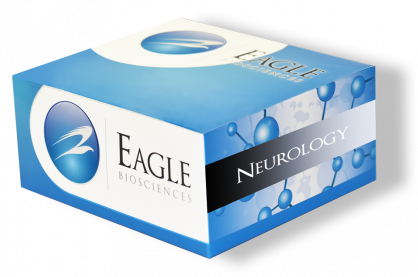Rodent beta Amyloid 1-42 ELISA
The Rodent beta Amyloid 1-42 ELISA is For Research Use Only
Size: 1×96 wells
Sensitivity: 2 pg/ml
Dynamic Range: 3.9-250 pg/mL
Incubation Time: 1 hour
Sample Type: Cell and tissue lysate as well as in body fluids
Sample Size: 100 µL
Alternative Names: Aβ42, Mouse / rat beta-Amyloid (1-42)
SAMPLE COLLECTION & STORAGE INFORMATION
The sample collection and storage conditions listed below are intended as general guidelines. Sample stability has not been evaluated.
Note: protease inhibitor cocktail with PMSF must be added to all samples to avoid protein degradation.
Brain lysate- Mix 800 μl of homogenate buffer (5M Guanidine HCl, 50 mM Tris HCl pH=8.0) with 100 mg of brain sample in a Dounce homogenizer placed on ice. Homogenize the tissue thoroughly and incubate at room temperature for 3-4 hours with mixing. Guanidine-HCl brain homogenates are stable at 4°C for several weeks and can be freeze-thawed many times without degradation of beta-Amyloid peptides.
Plasma – Collect plasma using EDTA or heparin as an anticoagulant. Centrifuge for 15 minutes at 1000 x g within 30 minutes of collection. Assay immediately or aliquot and store samples at ≤ -20 °C. Avoid repeated freeze-thaw cycles.
Assay Background
Alzheimer’s Disease (AD) is the most common neurodegenerative disorder in elderly people. It has been demonstrated that AD has biological causes and is characterized by the presence of senile plaques and neurofibrillary tangles mainly in cerebral cortex and hippocampus brain regions. Beta-Amyloid (1-40) (Aβ40) and beta-Amyloid (1-42) (Aβ42) are the main components of the above plaques; however, other forms of beta-Amyloid peptides are also present. Both peptides are cleaved from the Amyloid Precursor Protein (APP) by β-secretase and γ-secretase enzymes. Many studies suggest that Aβ42 or/and Aβ43 are required to initiate formation of amyloid plaques and neurofibrills that leads to the neurodegeneration, while Aβ40 is less neurotoxic.
Related Products
Mouse/Rat beta-Amyloid (1-42) ELISA Assay Kit (plasma)
Mouse/Rat beta-Amyloid (1-40) ELISA Assay Kit



